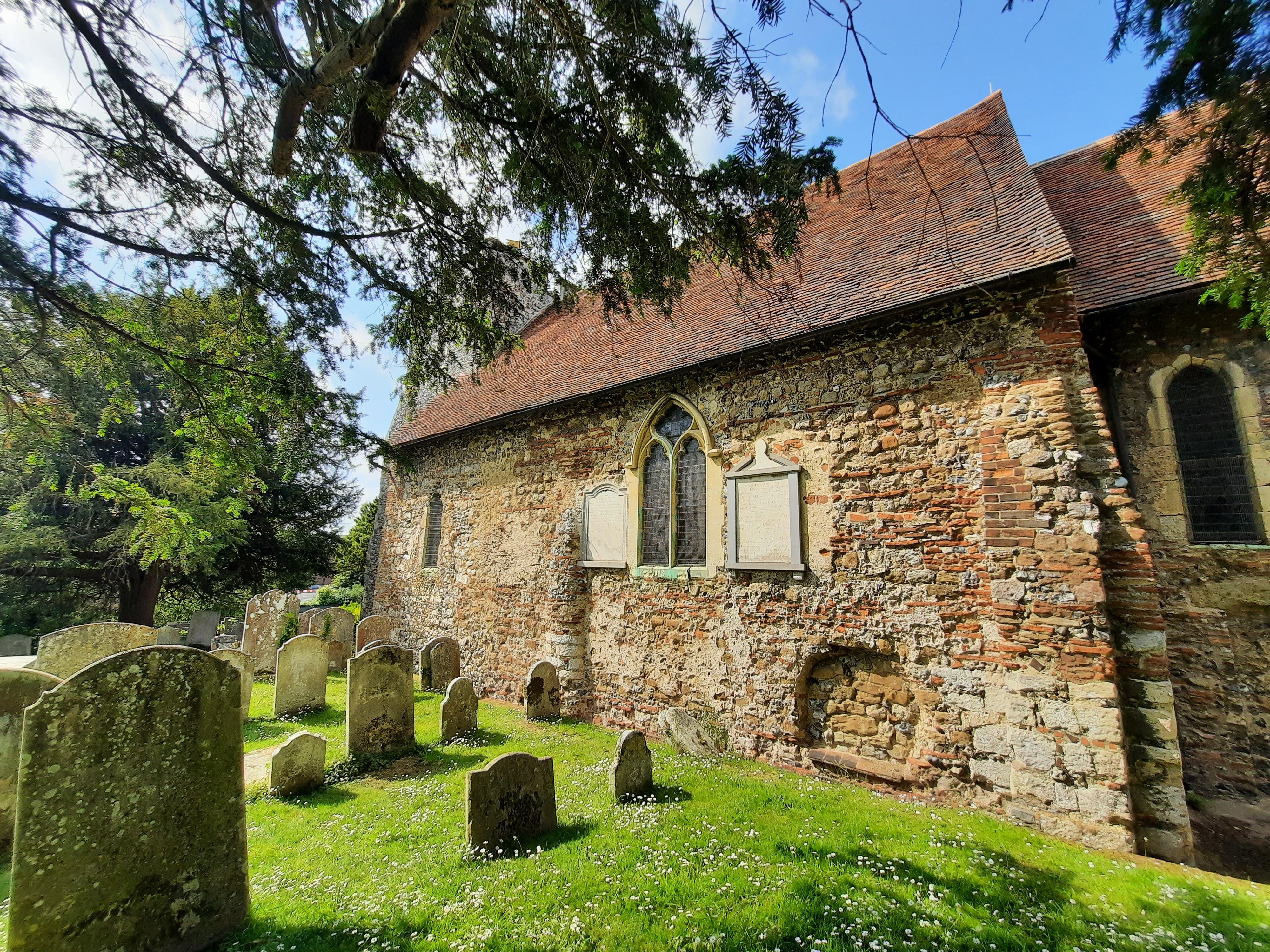St Michael Cornhill
City of London, Greater London
The church lies over the remains of the Basilica, the northern most part of the great Roman Forum built in the first century AD.

The oldest church in continuous use in the English speaking world; part Roman, part Saxon.
Canterbury, Kent
St Martin’s: a community of prayer and welcome in the name of Jesus Christ since before 597AD. It was here that St Augustine set up his mission when he arrived from Rome to convert the English.
The oldest part of St Martin’s church was built during the Roman occupation of Britain. It is uncertain whether at first the building was a church, a mausoleum, or something else.
Bertha was a Christian princess from Tours, in France. About AD580 she married Ethelbert of Kent, who was a pagan Anglo Saxon. Ethelbert restored St Martin’s for her, and she prayed here regularly. Ethelbert became king of Kent and ‘over-king’ of all the kingdoms northwards to the River Humber (200 miles to the north).
Augustine was a Benedictine monk in Rome. He arrived here in AD597 with 40 companions, including Roman monks and Frankish interpreters, to preach the good news of Jesus Christ. St Martin’s was Augustine’s first base for his mission. 'Here they first began to assemble, to sing the psalms, to pray, to celebrate mass, to preach and to baptize, until the king was converted to the faith and gave them greater freedom to preach and to build and restore churches everywhere'. (Bede’s Ecclesiastical History, AD731).
Bede writes of the enormous impact made by the message of Jesus, by the holy lives of the monks, and by miracles which confirmed the message. 'Great numbers gathered each day to hear the word of God, forsaking their heathen rites and entering the unity of Christ’s holy church as believers'. Pope Gregory, who had sent Augustine from Rome, wrote to Augustine telling him not to become swollen-headed because of the extraordinary things that God had chosen to do through him.
Needing more space, they extended St Martin’s to nearly its present size, using Roman building methods and reusing some Roman bricks. The largest part of the building (the nave) was the first Anglo Saxon structure made of mortared brick and stone instead of wood. Ethelbert soon granted Augustine more land in Canterbury, where he founded the Abbey and the Cathedral. Augustine became the first Archbishop of Canterbury. He died in AD 604 and was buried in the Abbey.
The east end of St Martin’s church was extended in the 12-13th centuries and substantially altered in the 19th century. The church tower was added in the 14th century. It has three bells, the largest of which was made in 1393.
St Martin’s remains in use for Christian worship, prayer and mission, as it has done ever since Augustine arrived in the 6th century.
City of London, Greater London
The church lies over the remains of the Basilica, the northern most part of the great Roman Forum built in the first century AD.
City of London, Greater London
The Dutch Church is a reformed church on the site of the 13th century Augustinian friary, the original building granted to Protestant refugees for their church services in 1550 was destroyed during the London Blitz.
Marshfield, Gwent
Mae Eglwys St Mair, Maerun, yn eglwys brydferth sy’n dyddio nôl i’r ddeuddegfed ganrif. Yn nythu’n glud yn y llain las rhwng Caerdydd a Chasnewydd, mae bellach yn adnabyddus am fod yn lleoliad ar gyfer un o episodau Dr Who!